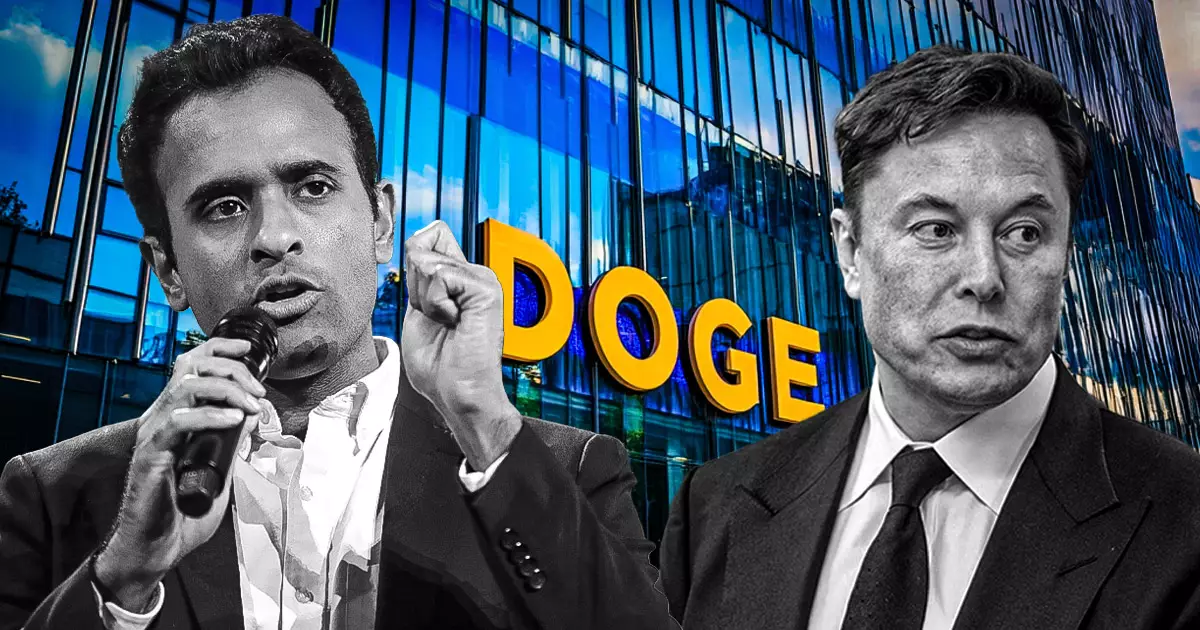In a bold move that has captured both attention and skepticism, U.S. President-elect Donald Trump has announced the creation of a new governmental initiative called the Department of Government Efficiency (DOGE). Appointing notable tech entrepreneur Elon Musk and former presidential hopeful Vivek Ramaswamy to spearhead this project, Trump aims to tackle bureaucratic excess and dramatically overhaul the federal spending system. The initiative is likened to the ambitious undertakings of the Manhattan Project during World War II, signifying Trump’s commitment to what he has termed the “Save America” campaign.
The establishment of DOGE raises significant questions regarding governance and effectiveness in the face of a staggering annual budget of $6.5 trillion. In an era where government inefficiency has frequently come under fire, the initiative’s stated goal is to reduce waste and fraud. The mission is notably ambitious, as Trump has expressed a vision of a more streamlined federal government that will be realized by July 4, 2026—a date that symbolically aligns with the 250th anniversary of the Declaration of Independence.
Public Engagement and Transparency
One of the key strengths of this initiative is the commitment to transparency as voiced by Musk in a recent X platform statement. His promise to maintain open communication about DOGE’s operations aims to empower citizens by inviting them to participate in the process of reform. Musk’s promise to compile a leaderboard of the most extravagant government expenditures is uniquely clever; it utilizes humor and public engagement to highlight significant areas of inefficiency within the federal budget.
Echoing Musk’s sentiments, Ramaswamy has emphasized the role of the public in identifying areas of waste and abuse. By actively inviting citizens to submit examples of government inefficiency, DOGE seeks to break the traditional top-down structure of decision-making in government, instead fostering a participatory approach that could potentially resonate with voters frustrated by systemic inefficiencies.
The Crypto Connection
Interestingly, the initiative’s name—DOGE—has sparked enthusiasm within the cryptocurrency community, particularly among Dogecoin supporters. However, this excitement has not been without its complications. Following the announcement, Dogecoin’s value saw a notable drop after a recent surge that had seen its worth rise to a three-year peak. This fluctuation raises questions about the intersection of political announcements and market responses in the volatile world of cryptocurrency.
Musk’s close ties to Dogecoin and his status as an influential figure in both technology and finance create an interesting dynamic. Many analysts speculate that his involvement with DOGE could rejuvenate interest in Dogecoin, particularly as a bull market approaches. This phenomenon illustrates the interconnectedness of politics, technology, and finance in today’s world, as authority figures leverage digital assets for broader reform efforts.
As Trump prepares to launch the Department of Government Efficiency, the initiative could either represent a significant shift towards a more efficient government or serve as a symbol of political overreach. Whether this ambitious project will succeed remains to be seen, but its unique makeup—including the collaboration of Musk and Ramaswamy—alongside its commitment to transparency and public engagement could pave the way for a new model of governance. With the eyes of the nation and the crypto community firmly fixed on DOGE, the stakes are high as Trump’s administration embarks on this unprecedented journey.



Leave a Reply